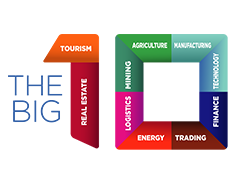In recent years, Africa has been undergoing a profound socio-economic transformation. At the heart of this change is the rise of the middle class—a demographic shift that is reshaping consumer markets, driving urban development, and creating exciting opportunities for both local and international businesses. As more Africans move into higher income brackets, their increased purchasing power and changing consumption habits are unlocking new frontiers for investment and innovation across the continent.
In this article, we explore the growth of Africa’s middle class, what it means for businesses, and where investors should be looking to tap into this emerging opportunity.
Understanding Africa’s Middle Class
Africa’s middle class is typically defined by income and consumption levels that allow for discretionary spending beyond basic needs. According to the African Development Bank, middle-class Africans earn between $2 and $20 a day—a modest benchmark by global standards, but a significant improvement in purchasing power relative to the region’s past.
The growth of this segment has been driven by:
-
Urbanization and the development of metropolitan economies
-
Access to education and better employment prospects
-
Expanding digital connectivity
-
Improved infrastructure and financial services
By 2030, it’s estimated that over 1 billion Africans will live in cities, many of them participating in an increasingly formal economy with aspirations for upward mobility.
Key Sectors Benefiting from the Middle-Class Boom
1. Retail and Consumer Goods
Rising incomes are fueling demand for higher-quality goods, branded products, and modern shopping experiences. Supermarkets, e-commerce platforms, and global retailers are expanding into Africa to cater to a population that is becoming more brand-conscious and quality-driven.
2. Financial Services
With growing incomes comes the need for savings, investment, insurance, and credit products. Fintech startups and banks are racing to provide inclusive financial services, often via mobile platforms, to meet the needs of an increasingly bankable population.
3. Real Estate and Housing
Middle-class families are looking for better living standards, including quality housing, security, and access to amenities. Developers are investing in residential estates, gated communities, and commercial complexes in emerging urban hubs.
4. Education and Skills Development
Education is viewed as a pathway to continued economic mobility. The middle class is demanding private schools, international curricula, and vocational training programs, creating a lucrative space for education providers and edtech companies.
5. Healthcare
Rising expectations for quality healthcare have led to demand for private clinics, diagnostic centers, telemedicine platforms, and health insurance products. Investors are increasingly backing healthcare infrastructure and innovation tailored to this segment.
6. Entertainment and Lifestyle
From streaming services and cinema chains to fashion, fitness, and tourism, Africa’s middle class is spending more on experiences and leisure, creating a thriving creative and lifestyle economy.
Business and Investment Opportunities
The growing middle class presents unique opportunities for both local entrepreneurs and international investors:
-
Consumer-Centric Startups: Innovators who solve local problems with scalable solutions—especially in fintech, healthtech, agtech, and logistics—are attracting significant funding.
-
Public-Private Partnerships (PPPs): As governments seek to expand infrastructure, PPPs offer entry points for investors in transport, power, education, and health.
-
Franchise Models: Brands that adapt their offerings to local preferences and pricing are succeeding through franchise expansion in fast food, fashion, and hospitality.
-
Impact Investing: Investors are increasingly funding businesses that create both financial returns and social impact—particularly those that empower women, youth, and underserved communities.
Navigating the Challenges
While the opportunities are vast, businesses must also navigate:
-
Infrastructure gaps in logistics, power, and connectivity in some regions
-
Regulatory hurdles and inconsistent policy environments
-
Diverse market preferences across countries and even within cities
-
Currency volatility and macroeconomic risks
A deep understanding of local markets, strategic partnerships, and a long-term view are critical to success.
Africa’s middle class is more than a rising income group—it represents a shift in mindset, aspirations, and economic potential. Businesses that understand and adapt to this evolving demographic will be well-positioned to lead in sectors ranging from retail and real estate to education and digital services.
For investors with vision and patience, the rise of Africa’s middle class is not just a trend—it’s a defining economic force of the 21st century.
Read more on The Big 10:
Investing in Africa’s Future: How Multinational Corporations Can Drive Development
Climate Change and Africa: How Businesses are Adapting to a Changing Environment
The Role of African Diasporas in Promoting Business Innovation and Development


